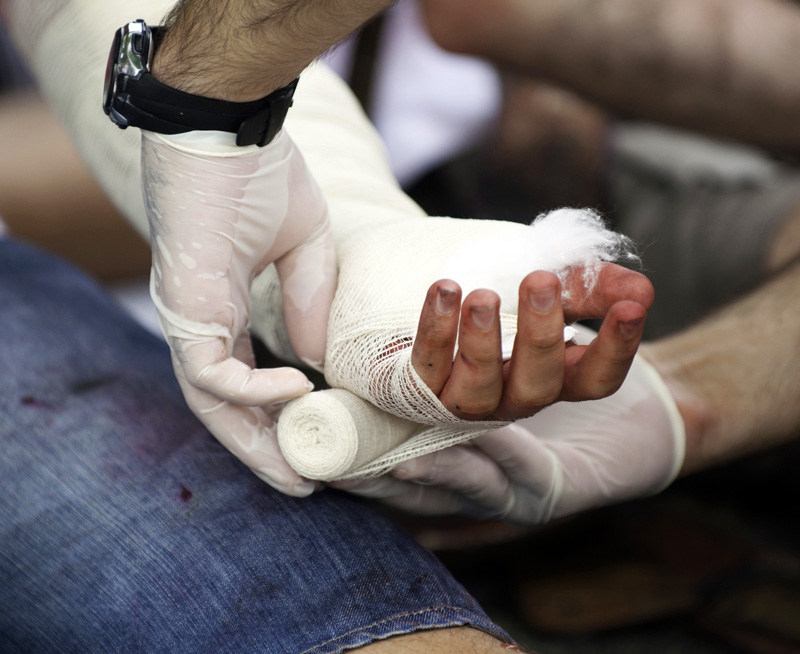Saving Lives
Time is of the essence … Every moment counts when you are near an active shooter. The Department of Homeland Security advises being prepared to take three courses of action:
Avoid
If you see someone with a gun or hear gunfire, run away as fast as possible if you have an accessible escape path – even if others around you don’t want to follow.
Deny
If you can’t escape, find a place where the shooter is unlikely to find you. Find a room with a door and lock it, or barricade heavy furniture against the door. Hide behind large items. Silence electronics. Remain calm and quiet.
Defend
Confront the shooter as a last resort when you believe your life is in imminent danger.
Know how to control bleeding
People with a life-threatening wound are more likely to survive if a bystander knows how to control the bleeding until medical care arrives.
First Aid for an open, bleeding wound:
- Immediately apply firm, direct pressure to the wound to stop the bleeding.
- If a clean cloth or bandage is available, put it on the wound and press it firmly with your palm to control bleeding.
- Apply constant pressure until the bleeding stops.
- Maintain the pressure by binding the wound with a thick bandage or a piece of clean cloth. If not available, continue to maintain pressure with your hands.
- Apply a tourniquet if you’re trained in how to do so. Be prepared to explain how long the tourniquet was in place when emergency help arrives.
- If possible, raise the injured limb above the level of the heart. Immobilize the injured body part as much as possible.
- Remove any clothing or debris on the wound.
- Don’t remove large or deeply embedded objects, probe the wound, or try to clean it.
- Don’t put direct pressure on an eye injury or embedded object.
In addition to training, Physicians Quality Care OCCMed offers low-cost emergency medical kits that help control bleeding for companies and organizations to have on hand for emergencies.

